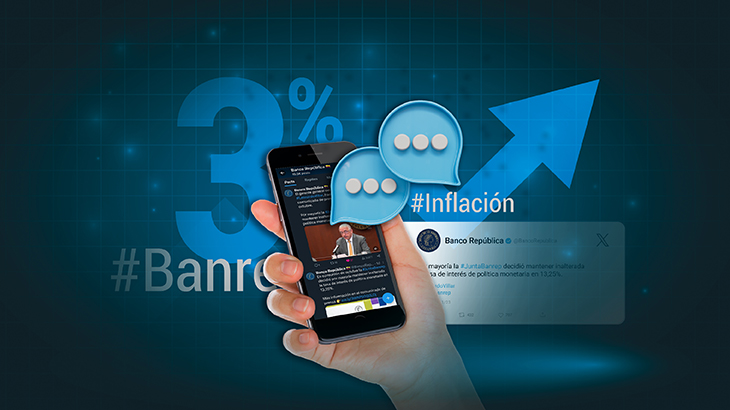Borradores de Economia
Number:
1256
Published:
Classification JEL:
E31, E37, E52
Keywords:
Inflation perceptions, Twitter, Real-time data, Central banks

The most recent
Juliana Jaramillo-Echeverri, Adriana Sofía Rodríguez
Gaurav Khanna, Carlos Alberto Medina-Durango, Anant Nyshadham, Daniel Ramos-Menchelli, Jorge Andrés Tamayo-Castaño, Audrey Tiew
Cesar Anzola-Bravo, Poveda-Olarte Paola
Abstract
This study follows a novel approach proposed by Angelico et al. (2022) using Twitter to measure inflation perception in Colombia in real time. By applying machine learning techniques, we implement two real-time indicators of inflation perception and show that both exhibit a dynamic similar to inflation and inflation expectations for the sample period January 2015 to March 2023. Our interpretation of these results suggests that our indicators are closely linked to the underlying factors that drive inflation perception. Overall, this approach provides a valuable instrument for gauging public sentiment towards inflation and complements the traditional inflation expectations measures used in the inflation–targeting framework.

 Jonathan Muñoz-Martíneza,
Jonathan Muñoz-Martíneza, 